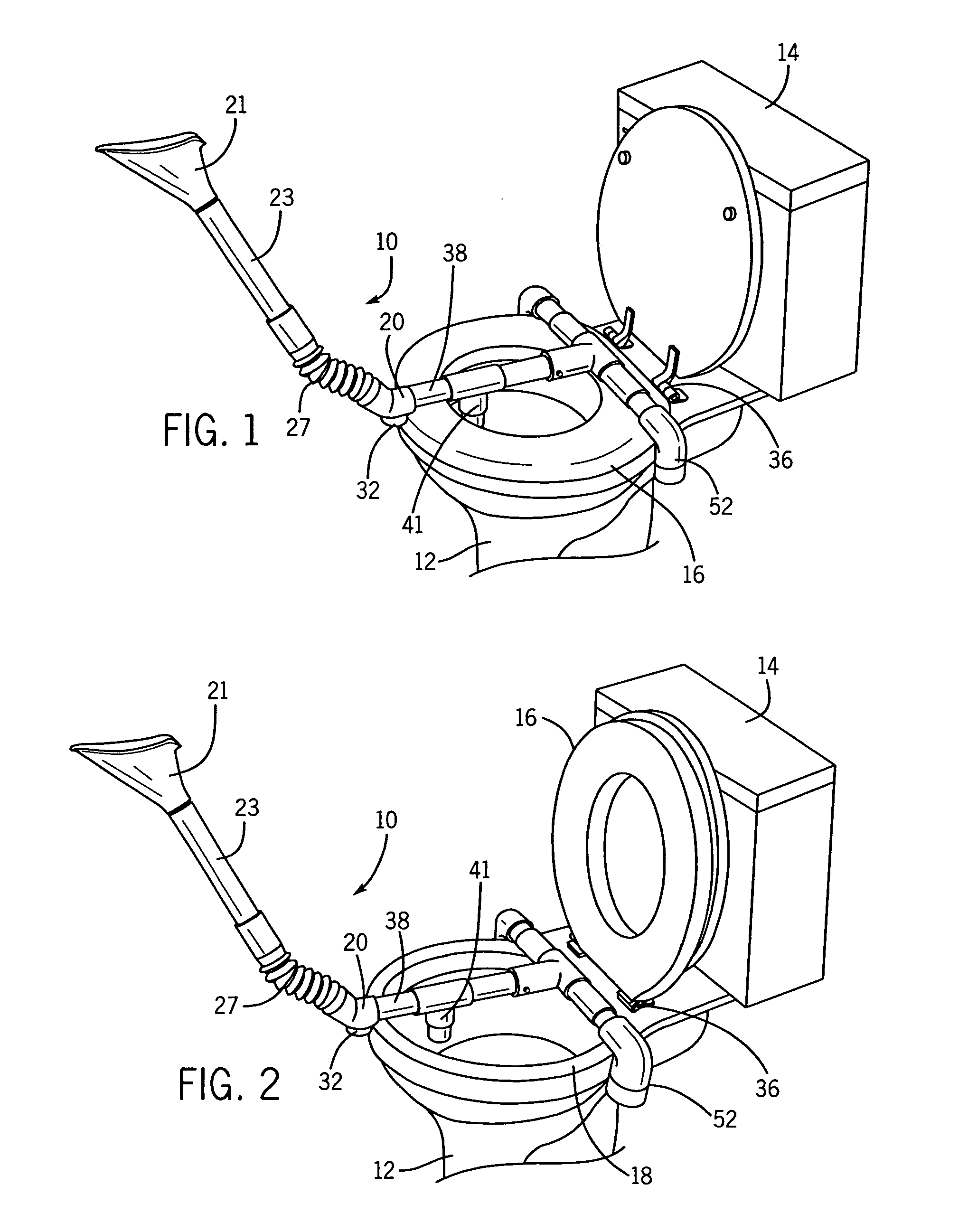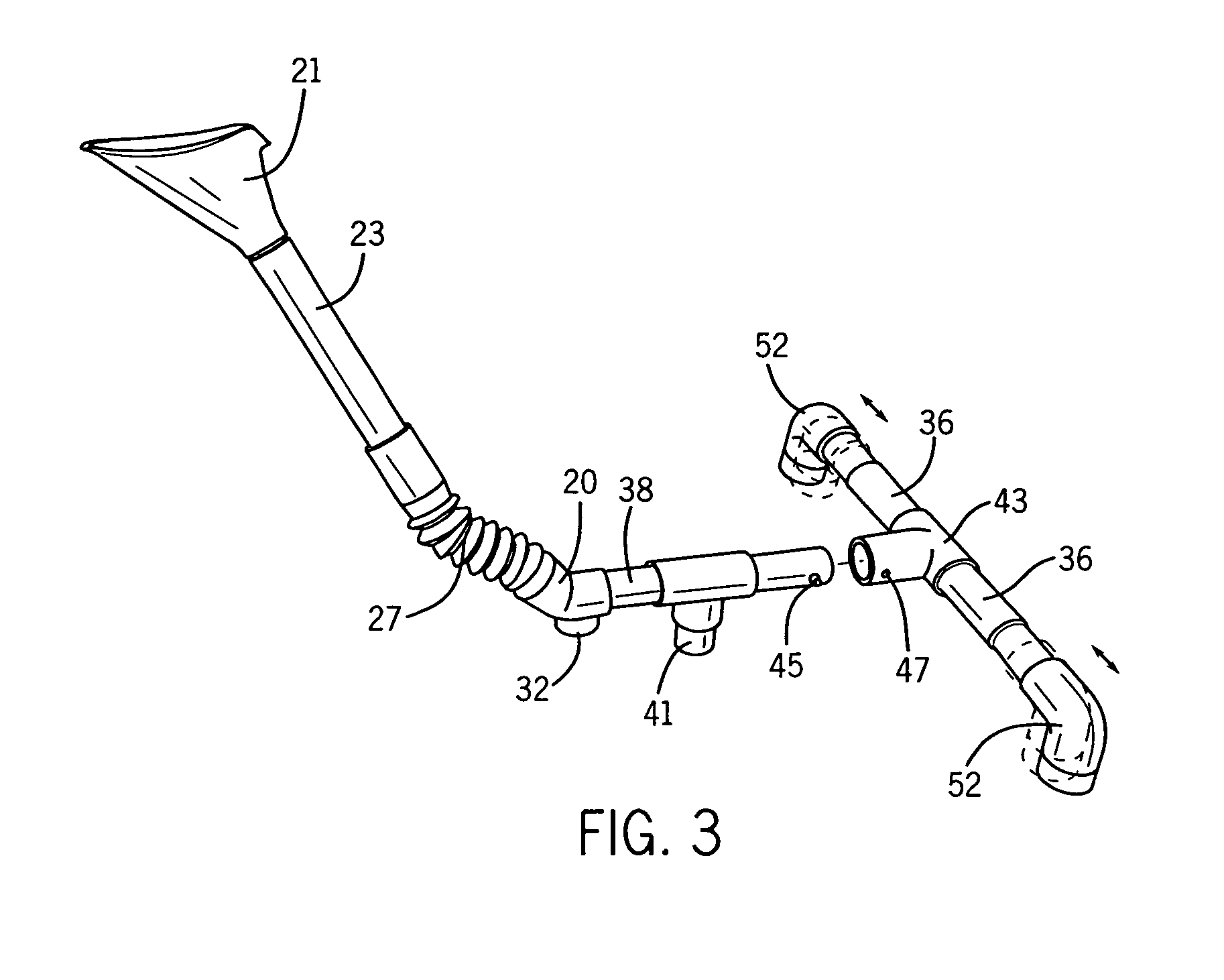Urination assistance device
a technology of urination assistance and urinal, which is applied in the field of urination assistance devices, can solve the problems of unsanitary conditions, unsanitary, and urine splashing, and achieve the effect of accurate aim and convenient storag
- Summary
- Abstract
- Description
- Claims
- Application Information
AI Technical Summary
Benefits of technology
Problems solved by technology
Method used
Image
Examples
Embodiment Construction
[0024]In accordance with the principles of the present invention, a urination assistance device 10 is provided. Referring to FIGS. 1-3, the urination assistance device 10 is adapted to rest above the bowl 12 of a standard toilet 14. The toilet 14 can be of any conventional type and size, in that the particular toilet does not form a part of the present invention. Also, the toilet can be installed in any setting, such as in a bathroom of a home, hospital or hotel, particularly since the present invention is ideal for travel. As detailed below, the urination assistance device 10 can be utilized above the bowl 12 with the seat 16 in the lower position resting upon the seat 16 (as seen in FIG. 1) or with the seat in the upper position resting on a toilet bowl rim 18 (as seen in FIG. 2).
[0025]The urination assistance device includes a receptacle 21. The receptacle 21 is connected to a stabilizing frame 20 at the front edge of the toilet 14. In one embodiment (seen in FIGS. 1-3), an outle...
PUM
 Login to View More
Login to View More Abstract
Description
Claims
Application Information
 Login to View More
Login to View More - R&D
- Intellectual Property
- Life Sciences
- Materials
- Tech Scout
- Unparalleled Data Quality
- Higher Quality Content
- 60% Fewer Hallucinations
Browse by: Latest US Patents, China's latest patents, Technical Efficacy Thesaurus, Application Domain, Technology Topic, Popular Technical Reports.
© 2025 PatSnap. All rights reserved.Legal|Privacy policy|Modern Slavery Act Transparency Statement|Sitemap|About US| Contact US: help@patsnap.com



